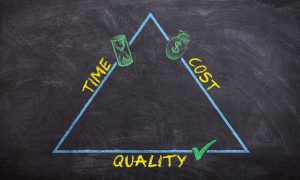Financial Accounting – The Public Language of Business
Accounting is the process of organizing, analyzing, and communicating financial information that is used for decision-making. Financial information is typically prepared by accountants—those trained in the specific techniques and practices of the profession. This course explores many of the topics and techniques related to the accounting profession. While many students will directly apply the knowledge gained in this course to continue their education and become accountants and business professionals, others might pursue different career paths.
A solid understanding of accounting can for many still serve as a useful resource. In fact, it is hard to think of a profession where a foundation in the principles of accounting would not be beneficial. Therefore, one of the goals of this course is to provide a solid understanding of how financial information is prepared and used in the workplace, regardless of your particular career path.
A traditional adage states that “accounting is the language of business.” While that is true, you can also say that “accounting is the language of life.” At some point, most people will make a decision that relies on accounting information. For example, you may have to decide whether it is better to lease or buy a vehicle. Likewise, a college graduate may have to decide whether it is better to take a higher-paying job in a bigger city (where the cost of living is also higher) or a job in a smaller community where both the pay and cost of living may be lower.
In a professional setting, a theater manager may want to know:
- Was the most recent play was profitable.
- How many tickets do we need to sell to break-even? Or, to achieve a target profit?

Similarly, the owner of the local plumbing business may want to know:
- Is it worthwhile to pay an employee to be “on call” for emergencies during off-hours and weekends?
- What should be the business’s minimum charge for a house call?
Whether personal or professional, accounting information plays a vital role in all of these decisions.

You may have noticed that the decisions in these scenarios would be based on factors that include both financial and non-financial information. For instance, when deciding whether to lease or buy a vehicle, you would consider not only the monthly payments but also such factors as vehicle maintenance and reliability.
The college graduate considering two job offers might weigh factors such as working hours, ease of commuting, and options for shopping and entertainment. The theater manager would analyze the proceeds from ticket sales and sponsorships as well as the expenses for production of the play and operating the concessions. In addition, the theater manager should consider how the financial performance of the play might have been influenced by the marketing of the play, the weather during the performances, and other factors such as competing events during the time of the play. All of these factors, both financial and non-financial, are relevant to the financial performance of the play.
In addition to the additional cost of having an employee “on call” during evenings and weekends, the owner of the local plumbing business would consider non-financial factors in the decision. For instance, if there are no other plumbing businesses that offer services during evenings and weekends, offering emergency service might give the business a strategic advantage that could increase overall sales by attracting new customers.
This course explores the role that accounting plays in society. You will learn about financial accounting, which measures the financial performance of an organization using standard conventions to prepare and distribute financial reports. Financial accounting is used to generate information for stakeholders outside of an organization, such as:
- owners,
- stockholders,
- lenders,
- governmental entities such as Internal Revenue Service (IRS website)
Financial accounting is also a foundation for understanding managerial accounting, which uses both financial and non-financial information as a basis for making decisions within an organization with the purpose of equipping decision makers to set and evaluate business goals by determining what information they need to make a particular decision and how to analyze and communicate this information. Managerial accounting information tends to be used internally, for such purposes as budgeting, pricing, and determining production costs. Since the information is generally used internally, you do not see the same need for financial oversight in an organization’s managerial data.
You will also note in your financial accounting studies that there are governmental and organizational entities that oversee the accounting processes and systems that are used in financial accounting. These entities include organizations such as the
- Securities and Exchange Commission (SEC website),
- Financial Accounting Standards Board (FASB website),
- American Institute of Certified Public Accountants (AICPA website),
- Public Company Accounting Oversight Board (PCAOB website).
The PCAOB was created after several major cases of corporate fraud, leading to the Sarbanes-Oxley Act of 2002, known as SOX. If you choose to pursue more advanced accounting courses, especially auditing courses, you will address the SOX in much greater detail.
For now, it is not necessary to go into greater detail about the mechanics of these organizations or other accounting and financial legislation. You just need to have a basic understanding that they function to provide a degree of protection for those outside of the organization who rely on the financial information.
Whether or not you aspire to become an accountant, understanding financial and managerial accounting is valuable and necessary for practically any career you will pursue.
Media Attributions
- bookkeeper-1016299_1920 is licensed under a Public Domain license
- triangle-3125882_1920 is licensed under a Public Domain license

